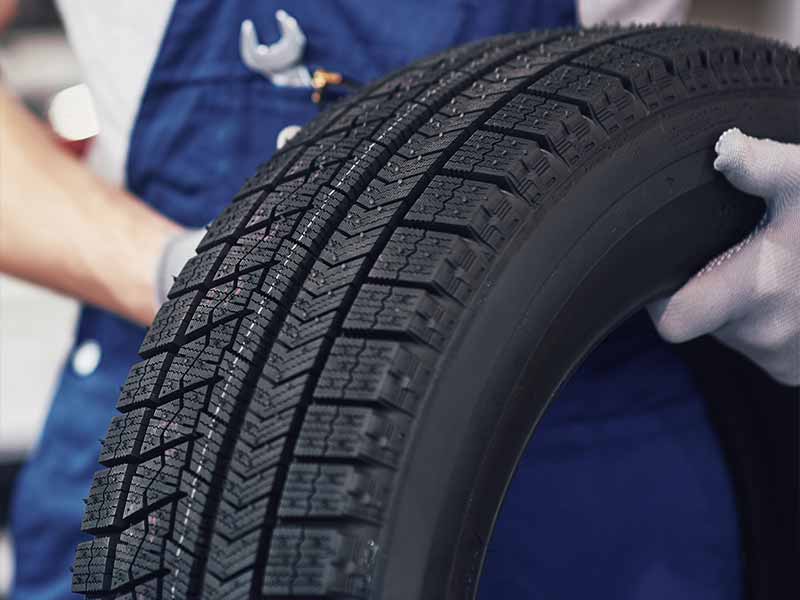When you encounter the “P” or “Passenger” designation on a tire, it’s an indicator of the tire’s design and capabilities, specifically engineered to support the unique requirements of passenger vehicles like cars, SUVs, and minivans.
This is not just technical; it’s practical, influencing your decisions when purchasing new tires, ensuring they are compatible with your vehicle, and capable of keeping you, your passengers, and other road users safe.
Passenger Tire Meaning
The term “Passenger,” often represented by the letter “P” in tire labeling, specifically refers to tires that are designed for passenger vehicles, which include cars, SUVs, and minivans.
In this article, we’re going to talk about what “passenger tires” really means and why it’s important for you to know about it. We’ll dive into what all those numbers and letters on the side of your tire mean and why they matter. We’ll make it simple to understand how this knowledge can help you choose the right tire, keep your vehicle running smoothly, and make sure you and your passengers are safe when you hit the road.
Let’s take a closer look.

What are Passenger Tires?
Let’s talk about passenger tires and what makes them special. You might have seen a “P” on a tire label and wondered what it means. Well, that “P” tells us the tire is made for passenger vehicles like sedans, coupes, minivans, and some SUVs. Let’s break down what passenger tires are all about in a way that’s easy to understand.
Characteristics of Passenger Tires
Passenger tires have certain features that make them fit for regular cars and driving.
- Tread Design: They usually have a tread pattern that gives you a smooth and quiet ride, perfect for your daily drives.
- How They’re Made: They’re often made in a way (called radial construction) that makes them sturdy and comfy to ride on.
- Size: They come in lots of sizes to fit different cars.
- Seasonality: You can get them for all seasons, summer, or winter, each kind made to work best in specific weather conditions.
Functionality and Performance
Knowing how passenger tires work and perform can help you have a safe and smooth drive.
- Smooth Ride: They’re made to give you a comfy ride and can handle the small bumps and dips on the road.
- Quiet Ride: They’re made to keep things quiet while you drive.
- Saving Fuel: These tires often help you save on fuel because of their low rolling resistance.
- Traction: They give good grip for everyday driving but might not be the best for carrying heavy loads or super aggressive driving.
Different Types of Passenger Tires
Passenger tires come in different types to handle various weather conditions.
- All-Season Tires: Good for all kinds of weather and give a balanced performance for dry, wet, and lightly snowy conditions.
- Summer Tires: Made to grip the road well in dry and wet conditions during warm weather.
- Winter Tires: Made to handle the tough stuff like snow, slush, and ice in winter.
Importance of Choosing the Right Passenger Tire
Picking the right passenger tire is key to making sure your vehicle is safe and performs well.
- Safety: The right tire helps keep your vehicle safe by providing good traction and stability.
- Performance: It helps your vehicle give its best performance, balancing a smooth ride with steady handling.
- Longevity: Choosing and taking care of your tires properly can help them, and possibly your vehicle, last longer.
Considerations for Selecting Passenger Tires
When picking out passenger tires, think about the following things to make sure they fit your driving needs.
- Driving Conditions: Think about your usual driving conditions like weather, type of roads, and how far you drive.
- Vehicle Specs: Always check your vehicle’s manual or the tire information sticker for the recommended tire sizes and types.
- Tire Ratings: Look at the tire’s speed rating and load index to make sure it fits the safety and performance needs of your vehicle.
Understanding Tire Size
Tire codes might look confusing at first, but they tell us a lot about our tires. You can usually find them on the side of your tire, and they tell us important stuff like its size, type, and what it can handle on the road. Let’s break down what these numbers and letters mean and why they’re important for people who drive passenger cars and trucks.
Breaking Down the Tire Code
A common tire code might look something like this: P215/65R15 95H. We’ve talked about this a bit before, but let’s go over it again and get into a bit more detail.
- P: This means the tire is made for passenger vehicles.
- 215: This number tells us the tire is 215 millimeters wide.
- 65: This is the aspect ratio.
- R: This means the tire is made with radial construction.
- 15: This tells us the wheel is 15 inches in diameter.
- 95: This is the load index, telling us the maximum weight the tire can carry.
- H: This is the speed rating, telling us the fastest speed the tire can handle.
Why Each Number Matters
Each part of the tire code tells us something different that affects how the tire performs and if it works with your vehicle.
Tire Width
- What It Is: How wide the tire is from one sidewall to the other, in millimeters.
- Why It Matters: It affects how the tire grips the road, how the car handles, and how much fuel it uses.
Aspect Ratio
- What It Is: The ratio of the tire’s height to its width.
- Why It Matters: It changes how the car handles and how comfortable the ride is.
Wheel Diameter
- What It Is: How wide the wheel is from one side to the other, in inches.
- Why It Matters: It makes sure the tire fits the wheel properly, which is important for safe driving.
Load Index
- What It Is: A number that tells us the most weight the tire can carry.
- Why It Matters: Making sure the tire can carry the weight of the vehicle is important for safety and preventing tire problems.
Speed Rating
- What It Is: Tells us the fastest speed the tire can safely handle.
- Why It Matters: Sticking to the speed rating keeps the tire safe and prevents it from getting damaged.
How Tire Numbers Affect You
Knowing what these numbers mean helps car owners make smart choices about buying tires and taking care of them.
- Safety: Making sure your tire fits your vehicle’s recommendations keeps you safe.
- Performance: Choosing a tire with the right width, aspect ratio, and speed rating makes your vehicle perform its best.
- Durability: Following the load index keeps your tire from getting overloaded, making it last longer.

Comparing Passenger Tires with Other Tires
Choosing the right tire can be tricky with all the different types out there. Passenger tires, light truck tires, and SUV tires each have their own special features and are made for different kinds of driving. Let’s talk about these differences in a simple way, making it clear for everyone to understand.
What are Passenger Tires?
Passenger tires are mainly made for cars where people ride, giving a comfy ride and enough grip for regular driving.
- Main Features: Comfy ride, quiet, and comes in many sizes.
- Great for: Cars, minivans, and some SUVs.
What About Light Truck (LT) Tires?
Light truck tires are made to carry heavy stuff and handle tough driving, like for work trucks or off-roading.
- Main Features
- Toughness: Can handle heavy stuff and rough conditions.
- Grip: Usually has strong tread patterns for good grip off-road.
- Carrying Stuff: Can carry more weight compared to passenger tires.
- Great for
- Light Trucks: Like pickups and vans.
- Work Vehicles: Like delivery trucks.
- SUVs: Especially ones used for towing or driving off-road.
And SUV Tires?
SUV tires try to give you the best of both worlds, offering the comfort of passenger tires and the toughness of light truck tires.
- Main Features
- All-Around: Made to handle different driving conditions.
- Carrying Stuff: Can carry heavier stuff compared to regular passenger tires.
- Performance: Balances between being comfy and stable.
- Great for
- SUVs: Especially family ones.
- Crossovers: Cars that mix features of SUVs and regular cars.
Picking the Right Tire
When choosing a tire, think about the following to make sure it works well with your vehicle and how you drive.
- Vehicle Type: Make sure the tire type works with your vehicle.
- How You Drive: Think about your usual driving conditions, like weather, road type, and weight carried.
- What the Maker Recommends: Always check the vehicle’s manual or tire sticker for recommended tire sizes and types.
Resources
Below are some links you may find helpful when learning about tires
- What’s the difference between P-metric/passenger tires and LT/light truck tires? – Tire Buyer
- How to read tire size – Bridgestone
Final Thoughts
We’ve covered a lot about passenger tires, breaking down what all those codes on your tire mean and why they’re important for you. Knowing about what “P” or “Passenger” on your tire means helps you pick the right tires that are safe and work well for your car or SUV. It’s not just about getting from point A to point B; it’s about making sure you get there safely and without any tire troubles.
So, next time you’re looking at new tires or checking on your current ones, you’ll know what to look for and what it all means, keeping you in the driver’s seat when it comes to taking care of your vehicle.
Good luck and happy motoring.




